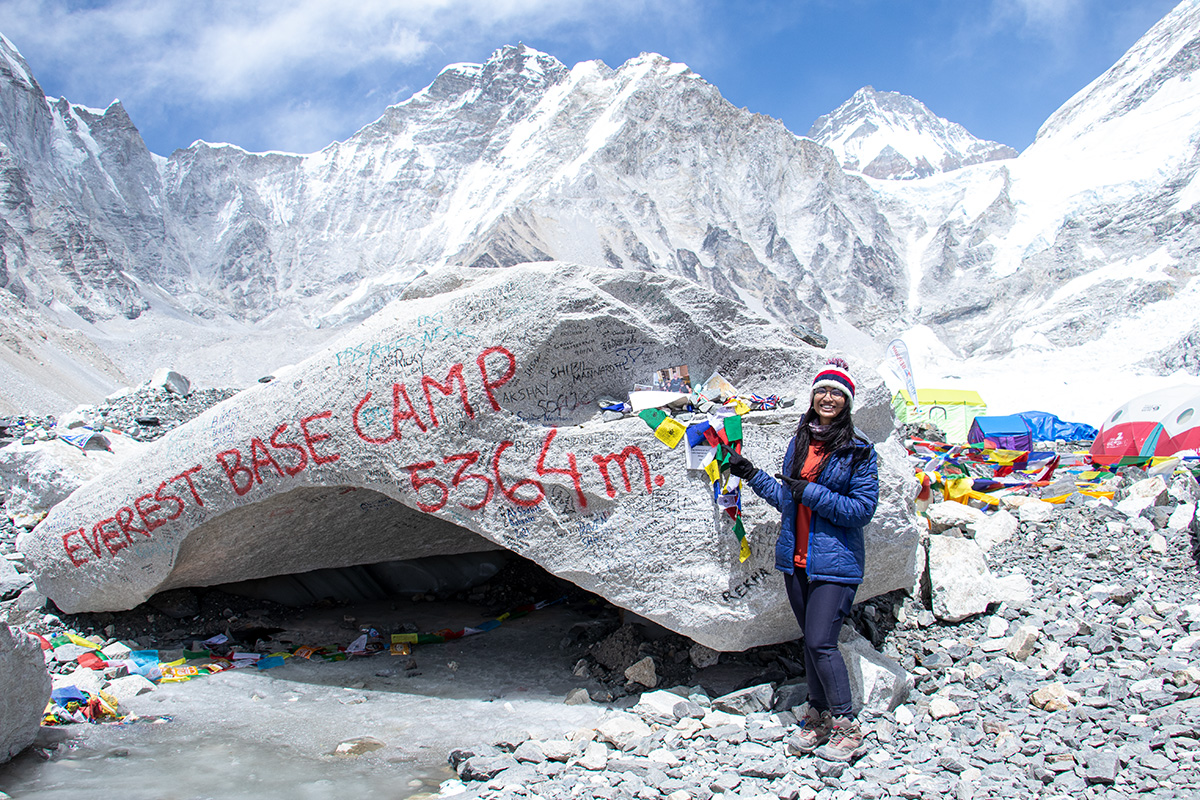One of the most common questions asked about the Everest Base Camp trek is “How difficult is Everest Base Camp Trek?” ”What fitness level is required for the Everest Base Camp Trek?” .As daunting as the name would sound Everest Base Camp trek is not the most difficult trek. It is a moderate-level trek that can be completed by any person with an average level of fitness. click the link Complete Guidebook for Everest Base Camp Trek
Of course, trekking to Everest is not going to be like taking a walk to the park as it is 12-14 days of rigorous walk through lush green dense forest, steep country roads, challenging climbs but its’ not a technical climb and if you’re fit enough, mentally and physically, you are more than likely to be up to the challenge. It is a hard and tough trek at high altitudes that takes at least more than 10 days.
The Everest Base Camp Trek requires no technical expertise or mountaineering skills as it is basically a long hike at altitude.
While only a few brave men and women will summit Everest each year, around 30,000 people will make the trek through the Khumbu Valley to Everest Base Camp to catch a glimpse of the tallest mountain in the world.
People of all ages, shapes, and sizes have completed the trek over the years – with a little bit of preparation and determination you will find that almost anyone can conquer the trek and tick it off their bucket list.
Generally, people become skeptical about the Everest Base Camp trek due to its long duration around 12 days (14 if you include a pre and post-night stay in Kathmandu).
The reason for this is because most of the trekking is at a slow pace and days for acclimatization have to be factored in – the trek would be much harder if you tried to complete it in less than 12 days.
Despite being non-technical and entirely achievable for anyone with some basic fitness, there are still some considerations that need to be taken into account before you set out on your own Everest Base Camp Trek.

Length of the trek
At 130km (round trip) the trek seems quite long, but if you consider that on a typically guided trek you will only be walking for 9 out of the 12 days, you’ll see that you will be covering about 15km per day. If you keep in mind that the average walking pace is about 5km/hour the figure doesn’t seem all that high. That being said, the 15km per day will not be on a paved path that is flat. Rather you will be trekking on quite rocky and sometimes snowy terrain (depending on season and altitude) that is sure to slow down your pace.
When you combine the terrain with the fact that you are generally hiking upwards, gaining altitude, you can see how the trek becomes a bit tougher.

Altitude
Altitude is by far the most challenging aspect of the trek and is what makes it more difficult than your average trek of the same length. Acute Mountain Sickness and other altitude-related illnesses are a serious risk at the sort of altitudes encountered on the trek. The trek starts after the gut-wrenching flight to Lukla, which stands at just below 3,000m, and then makes its way up to Everest Base Camp at around 5,400m. At the highest point, Kala Pathar, you will be at just over 5,500m – a height that allows to you experience breathtaking views of the whole region.
Most guided tours will have 2 days factored in to allow for acclimatization. These days allow your body to get used to the higher than normal altitude but also provide an opportunity to explore some of the surrounding areas while not trekking.
As a result of the acclimatization days and the slow approach to increases in altitude, the outward leg of the trek should take 9 days while the inward leg should take only 3 days.
Be sure to read up a bit on the symptoms of altitude sickness and on proper acclimatization techniques before embarking on the trek. We advise seeking the advice of your doctor as high altitudes can sometimes bring underlying illnesses to the fore.
Weather and climate
The weather in the Everest Region is not always perfect for trekking. If you trek in the summer season, heavy rainfall in the lower elevation makes the trail wet and slippery. The misty and foggy climate after rainfall may obscure the vision and there may increase risk while walking through the trails too. Likewise, in the winter season, the continuous snowfall makes the trail slippery; trekkers also feel difficulty breathing in higher elevations. Even flight may be at high risk due to low vision. While trekking on off-seasons, always get adequate information about the trek and always hire well-qualified guides.
Training for Everest Base Camp Trek
Practice hiking
The single best way to prepare for your Everest Base Camp trek is to get out hiking. Find some local trails, hike through your town, or just get out and walk. Get used to long walks. Learn where your body struggles and how far you can push yourself. You’ll be amazed at how far you can go once you get used to pushing through the first wave of discomfort.
Start small, build your endurance, and step up the difficulty over time. Get to where you can walk for 5 or 6 hours with minimal breaks. Once you’ve done a few all-day hikes, you will have a good idea of how your body will react and how to manage an Everest Base Camp Trek.
Exercise and workouts
Training for Everest Base Camp should include improving cardio endurance, strength endurance, and being comfortable carrying a daypack uphill for long periods at a time. At least 8-12 weeks before your trek, you should begin hiking or taking long walks at least 1 day per week (focus on duration more than distance)
Acclimatization practice
Everest Base Camp trek is a high-altitude trek that goes up to the elevation of 5400 m. As you trek higher, there is less oxygen to breathe. According to the Centers for Disease Control, an elevation above 2,800m, is 60% less oxygen than sea level. Altitude sickness can attack anyone even to young and fit person. If not treated on time, it will end your trek and in some case proves to be life-threatening.
Therefore, if this is your first high-altitude trek it would be better to choose any other destinations first. There are many other options for high altitude trek in Nepal, such as the Annapurna Base Camp trek or Muktinath Jomsom trek. These might be treks for acclimatization practice for the successful completion of the Everest Base Camp trek.
Conclusion
Everest Region Trek is the most preferred trek in the Himalayas. Trekking at a higher altitude is always risky, but don’t get confused, Everest Base Camp Trek is not that risky or dangerous. The EBC Trek has been easily accomplished by trekkers of 17 to 70 years old; so if you have dedication and enthusiasm, EBC Trek is one of the easiest treks for you. There are numerous Everest Region Treks we offer to our adventure seekers.




